There are many Australians in care-based settings. As of 30 June 2021, over 46,200 children were in out-of-home care (OOHC). The number is substantially higher for those in the National Disability Insurance Scheme (NDIS) with over 550,000 Australians receiving support for their disability.
Both these sectors demand high levels of compliance, documentation and quality of care due to the nature of their services. But without effective care management software to simplify admin-related tasks, running a care organisation can be extremely challenging, cumbersome and time-consuming – and unfortunately at risk of human error.
Care management software offers several advantages over paper-based processes for care providers and their patients. This guide will take a look at what they are.
1. Enhanced client care
Good care management software can provide a centralised platform for storing, accessing, and updating patient information, care plans, assessments, and other relevant documentation. Access to comprehensive client records and medical information makes it easier for providers to deliver better care services and focus on quality.
For example, Jim is an NDIS participant who likes to spend time in a park, so his physiotherapist schedules his sessions at his favourite park nearby. Jim is thrilled with his therapist going the extra mile, so he tells all his friends about the care provider’s services. The care provider gains three new participants thanks to Jim’s word-of-mouth recommendation.
A good NDIS client management system has the ability to track these participant preferences. Employees don’t spend time overloaded with paperwork because all inputs are automated. They can actually use the time to provide better care.
2. Streamlined care services
One of the best ways to enhance the quality of care is to streamline and automate the services so that employees aren’t saddled with paperwork and other process-driven tasks and can focus on their client’s needs. This includes proper communication between clients and staff, between staff members passing over shift notes, incidents, accessing medical records and much more.
A higher level of automation means that things don’t slip through the cracks because they are recorded, so no need to deal with lost paperwork and misplaced notes. Automating routine tasks, setting up reminders, scheduling and more frees up valuable healthcare professional time to focus on what truly matters – delivering high-quality care to patients.
3. Improved compliance with regulations
The NDIS and the OOHC have high compliance requirements to ensure proper quality of care is provided to those in need. It’s easy to miss without the right systems to enable compliance measures, which can result in hefty non-compliance actions.
For example, NDIS providers must have an incident reporting system in place so that matters of significance are reported to the NDIS Commission. Failure to report within the statutory timeframe can lead to infringement notices and compliance actions. A good care management software should be able to help you meet most of your NDIS reporting requirements.
4. Better reporting
Good care management software provides real-time insights and generates reports about participants, allowing providers to tailor plans, monitor progress and adjust treatments based on accurate information. In-built or customised forms can make it easier to store records for compliance purposes.
Modern technology provides access to real-time data. This allows providers to assess and monitor performance, identifying gaps in services provided and improvements necessary. It makes it easier for providers to identify trends, patterns and opportunities to improve the quality of care and grow their businesses within the regulatory framework provided to them.
5. Reduced administration costs
Automating tasks previously done manually can save a tremendous amount of time on mundane admin tasks, allowing staff to focus on more value-added tasks rather than getting bogged down by repetitive activities. You may not need as many staff members to handle admin-related tasks, which can save costs and improve business cash flow.
Tasks also get completed faster, improving the overall efficiency of operations. NDIS software works by streamlining admin tasks, allowing you to allocate resources towards caring for participants and their needs, improving your quality of care and contributing to your potential growth while reducing admin costs.
6. Reduced risk of human error

Unfortunately, human error is an inevitable issue when tasks are manual. The software can reduce these errors and prevent costly mistakes, saving you money in the long run.
For instance, Bob, an NDIS participant must be given medication at a particular time daily. With shift changes and new staff coming on board, this can be easy to miss – resulting in health consequences for Bob, who must be rushed to the hospital. This incident also needs to be written up for the NDIS.
A medication management module with in-built reminders will ensure staff are alerted when it’s time to provide the medicine to Bob. This significantly reduces human error when providing care in different settings or by different people.
7. Reduced administrative burden on staff
The reduced administrative burden on staff takes them away from time-consuming paperwork so they can focus on helping clients without burning out and leaving the industry.
When your staff members feel valued and able to perform tasks in a more stress-free environment, they are happier and likely to remain in their jobs without looking elsewhere – ultimately improving your retention rate and ensuring consistency of services without having to retrain new staff time and time again. Once administrative tasks are streamlined, staff can allocate their time better and contribute to the growth of your business.
In conclusion

No two participants are alike. They need different types of care, support, and so much more. The right care management software empowers you to create personalised care plans that cater to unique needs while taking the paperwork burden away from your staff. When your employees don’t have to worry about administrative work, they can redirect their efforts into improving their quality of care, which will only benefit you in the long run especially if you are looking to find more clients as a care provider.
CTARS is among the simplest and most effective care management systems available to Australian NDIS and out-of-home-care providers today. The user-friendly software has all the crucial modules to ensure 100% compliance and administrative ease. With CTARS, you have one comprehensive dashboard with advanced integrations that give you an overview of your operations, allowing you to make strategic decisions to help you scale and grow.
If you are thinking about registering as an NDIS provider, we suggest you check out our article on the costs to become an NDIS provider to give you a comprehensive understanding of what may be involved.
Get more information on how CTARS works and contact us today for a free demo.








